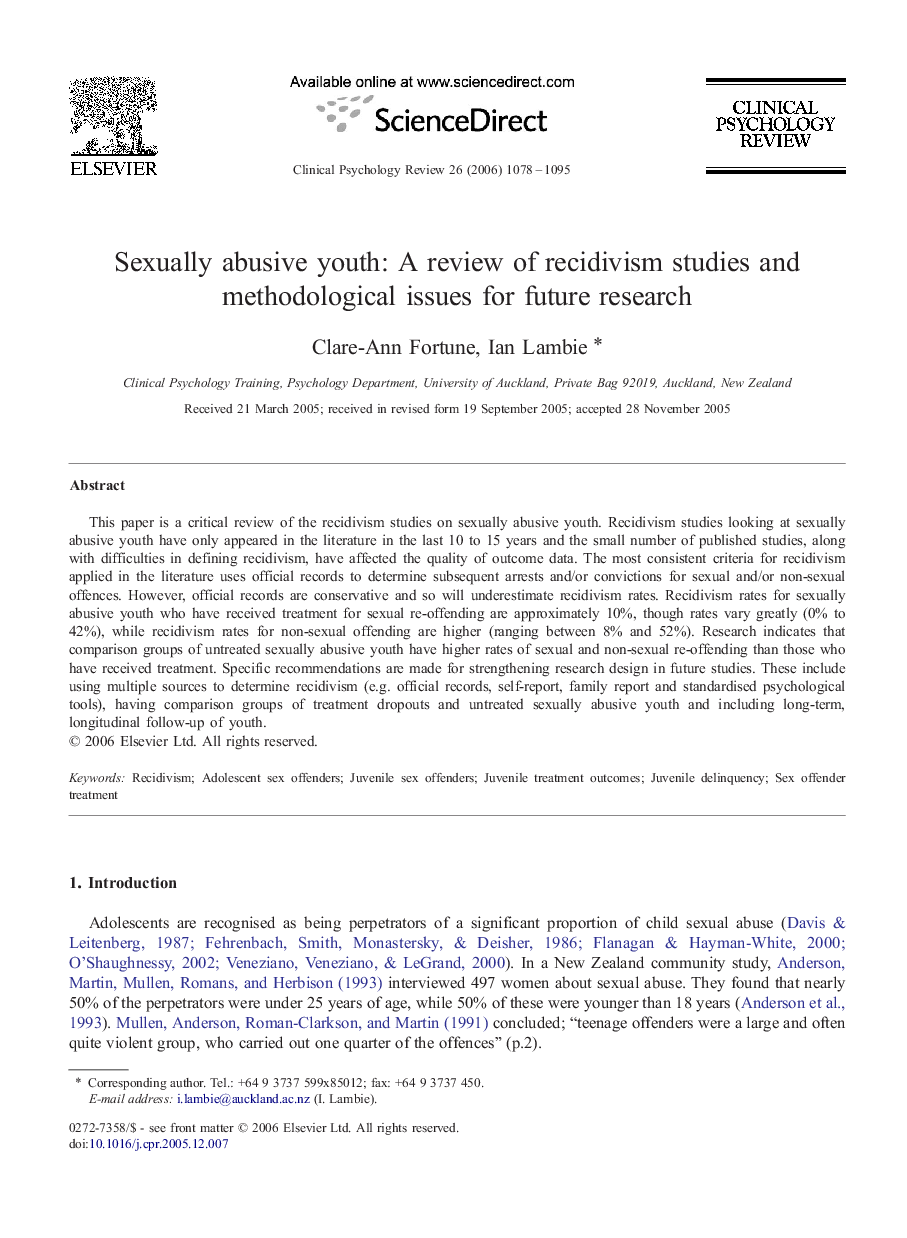| کد مقاله | کد نشریه | سال انتشار | مقاله انگلیسی | نسخه تمام متن |
|---|---|---|---|---|
| 904133 | 916631 | 2006 | 18 صفحه PDF | دانلود رایگان |

This paper is a critical review of the recidivism studies on sexually abusive youth. Recidivism studies looking at sexually abusive youth have only appeared in the literature in the last 10 to 15 years and the small number of published studies, along with difficulties in defining recidivism, have affected the quality of outcome data. The most consistent criteria for recidivism applied in the literature uses official records to determine subsequent arrests and/or convictions for sexual and/or non-sexual offences. However, official records are conservative and so will underestimate recidivism rates. Recidivism rates for sexually abusive youth who have received treatment for sexual re-offending are approximately 10%, though rates vary greatly (0% to 42%), while recidivism rates for non-sexual offending are higher (ranging between 8% and 52%). Research indicates that comparison groups of untreated sexually abusive youth have higher rates of sexual and non-sexual re-offending than those who have received treatment. Specific recommendations are made for strengthening research design in future studies. These include using multiple sources to determine recidivism (e.g. official records, self-report, family report and standardised psychological tools), having comparison groups of treatment dropouts and untreated sexually abusive youth and including long-term, longitudinal follow-up of youth.
Journal: Clinical Psychology Review - Volume 26, Issue 8, December 2006, Pages 1078–1095